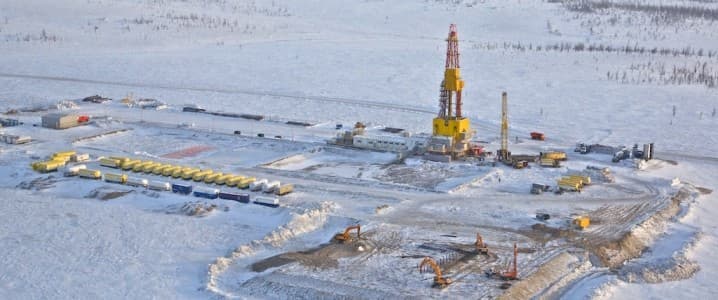Oil prices have been trading in a narrow range over the past week, with Brent crude sinking to an intra-day low of $65.01 per barrel (bbl) on 13 August before rising to an intra-day high of $67.06/bbl on 15 August with momentum skewed to the downside thanks to a potential peace deal between Russia and Ukraine. Recent meetings between U.S. President Donald Trump, Russian President Vladimir Putin, Ukrainian President Volodymyr Zelenskyy and European leaders have weighed on prompt prices, pushing them below several key moving averages.
Trump has revealed that arrangements are being made for another meeting between Putin and Zelenskyy, the first between the two leaders ever since the war began three and a half years ago. Zelenskyy has described his latest talks with Trump as “very good” and acknowledged potential U.S. security guarantees for Ukraine, although no specifics of Washington’s support have been divulged.
“The odds of a peace deal are rising, which would very likely lead to easing sanctions on Russian oil product,s moving global supplies to more of a surplus,” Dennis Kissler of BOK Financial said in a note.
Meanwhile, upcoming refinery maintenance in the U.S. coupled with fading summer demand, has been weighing on WTI prices. According to the Energy Information Administration (EIA), crude inventories at the Cushing hub have increased for six consecutive weeks and currently stand at 23.1 million barrels. However, inventory levels remain significantly below the five-year average clip of 35.1mb. The high pressure on WTI has triggered a widening spread between Brent and WTI, growing from a low of $2.24/bbl in late June (for the prompt contracts) to $3.87/bbl intraday on 19 August.
Related: Despite Delays Suriname’s Oil Boom is Fast Becoming a Reality
Meanwhile, Erin has become the first major hurricane of the 2025 Atlantic season, reaching Category-5 status on 16 August following an unusually rapid atmospheric pressure drop. However, its trajectory has swung north eastwards along the eastern seaboard of the U.S. through the week, taking it away from critical oil and gas infrastructure. The 2025 hurricane season has so far been relatively quiet, with storm duration also curtailed. Hurricane activity in the country tends to escalate from mid-August onwards, and current models are pointing to another potentially active season. The National Oceanic and Atmospheric Administration (NOAA) continues to forecast an above-average season, but has moderated its May pre-season predictions. NOAA now sees the country being hit by 5-9 hurricanes in the current season, with 3-5 being major ones (above Category 3).
Despite these developments, commodity analysts at Standard Chartered see very limited potential for Russian energy commodities returning to Europe any time soon. Last week, we reported that fears that oil prices will crash if Trump manages to negotiate a truce with Putin are overdone. First off, StanChart says that Russia has been producing unsustainably at its maximum capacity with long-term consequences for its reservoirs. The country’s oil production averaged 9.01 million barrels per day (mb/d) in H1-2025, about 610,000 b/d lower than the 2021 annual average before the invasion of Ukraine. A lifting of export sanctions will mean a return of Western service companies and Russia being able to access quality replacement parts; however, Russia just doesn’t have a lot of spare production capacity to flood the oil markets.
Second, the removal of the oil price cap on Russian oil would disincentivize India and China, the biggest buyers of discounted Russian. India’s imports of Russian crude have surged since the war began, jumping from $2.31 billion four years ago to $52.2 billion in 2024. Further, Europe is unlikely to put itself at Putin’s mercy again by buying large quantities of Russian oil and gas.
In the same vein, StanChart sees limited scope for Russian pipeline gas returning to European markets. According to the analysts, Russian LNG represents the biggest tail risk, with a possibility of formerly sanctioned cargoes returning to Asia. European benchmark gas Dutch Title Transfer Facility (TTF) for September delivery has continued its recent slide, falling to a 15-month intra-day low of 30.30/MWh on 18 August, before settling at EUR 32.21/MWh on Wednesday. As discussed in last week’s Commodity Roadmap. However, Europe’s gas injections have slowed down relative to the five-year average over, with data from Gas Infrastructure Europe (GIE) showing that inventories increased by 2.30 billion cubic metres (bcm) w/w to 85.99 bcm (74% of technical maximum fill capacity) but 8.11 bcm below the five-year average fill. Last week’s refill rate was nearly 8% below the five-year average and 3% lower than the same week in 2024.
By Alex Kimani for Oilprice.com
More Top Reads From Oilprice.com
